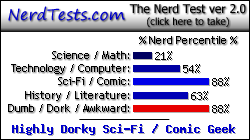"Greetings. Today I'm going to show you show to cook up some delicious Resident Evil 4. You will need, some salt-cured spanish meat of unknown origin, a pinch of Jaws, a dash of Day of the Dead, a soupson of Metal Gear and a sprinke of Shenmue. Stir well, placed in a greased baking tin and leave for approximately 3 years until golden brown on top. Warning: Eat in small doses - excessive consumption can cause a laxative effect. May contain Parasites."
Yes, the game that has been locked away in the development labs of Capcom for the last few years has finally been unleashed on a public that is in many ways unprepared for what they will see, hear and experience. Many people never got on with the Resident Evil series in the first place, whether it was down to the clunky controls, limited ammunition or a general dislike for the horror genre, and even series stalwarts were beginning to get tired of the same old zombie formula. They've taken the watered down DNA and injected it with an invigorating shot of adrenalin, and as a result they've come up with the best game I've played in years.
There are many reasons why RE 4 is such a masterpiece. The first thing you will notice are the graphics - incredibly detailed, realistically lit and yet given a style of their own through the usage of sepia tones. If you've seen screenshots of the early village sections of the, you will have no doubt noticed just how brown everything looks, but fear not, later stages of the game have a much wider pallet of hues, including the blue-grey of the stone castle, the deep red of blood, and the bright orangey-yellows of a fireball coming straight at you.
Then there is the sound. Not long after starting the game you will start to associate certain noises with fear, and then panic. The snarl of a chainsaw, the shouting of the villagers in an alien tongue, creepy chanting, distancing snuffly breathing, and the relentless pounding of the sountrack that signals that something is out there, and it's coming for you. If you have a surround sound set-up you will hear the villagers (and other foes) behind you, or to the side. It's not uncommon to be fending off an angry mob of 6 or 7 people, and then hear a shrill scream and the angry rip of the chainsaw from behind. Of course, by then, it's too late, and your head is already rolling along the ground...
Next, there's the shear range of set pieces in the game and not knowing what is coming next. To spoil these would be mean spirited of me so let me just say that each and every chapter (all 19 of them) turns the tables on you in some way and it's up to you to instinctively try and get out of whatever trouble your in. These include some truly spectacular boss battles, many of which will see you get torn to pieces (sometimes literally) on your first try. But fear not, because although Resident Evil 4 is harsh and unrelenting in pace, it is also extremely fair.
Every time you enter a dangerous encounter, puzzle or set piece, there's a restart point, so you don't have to reload from the last time you saved a at typewriter like previous games in the series - you just try again. This gives you the freedom to experiment, trying new tactics until you get it right. In the first hour of the game, when you are still getting used to the controls, the pace, and the sheer number of enemies you have to face at any one time, you will most certainly die at least once. It's a harsh baptism into the world of RE:4, but don't give up, just try again, learn from your experience and adjust.
There are elements of RE:4 that you will recognise from other games and films. Again, without spoiling anything, most obvious of these are the codec conversations from the Metal Gear games and the Quick Time Events from Shenmue. Don't worry, the conversations aren't anywhere near as long and rambling as the ones in the MGS series - they usually don't take any longer than a minute at the most. The QTE's are far more dynamic then they ever were in Shenmue too - rather than occurring at prescripted moments, they are context sensitive. For example, if you shoot an enemie in the knee, he will fall down, and if you then close in an image of the A button will appear with "Kick" underneath. A quick press will deliver a swift roundhouse to the head, and if they've been sufficiently weakened already, the head might explode like an over ripe cantaloupe.
No game has demonstrated to the power of the Gamecube better than RE:4. I have counted at least 12 enemies coming at me at the same time with no slowdown at all, and gargantuan bosses. If the Gamecube has not performed as well as Nintendo has hoped, it's certainly not down to the capabilities of the machine itself (or the quality of the games for that matter). I'll save that debate for another time however, or I'll be here all week.
The game is also extremely replayable. The fact that enemies have "hit zones" and the game features realistic physics mean that no two battles every play out exactly the same way. Also, there is a selection of side games and sub quests, both hidden away within the main game and unlocked when you finish the game for the first time as well. I say first time, because you can use your save file to start again, with all the weapons and upgrades you gained during your first play through (or you could try the Professional difficulty).
Yes, I did say upgrades. You will encounter the rather shady looking (and sounding) merchants at various points through the game, often before a particularly nasty battle, and you can buy new weapons and upgrade old ones. There are many statistics that can be improved for each gun, including firepower, firing rate, bullet capacity and reload speed. Reloading can no longer be done from the safety of your inventory screen, it has to be done on the fly, which can lead to some very fraught moments as Leon thumbs some more shells into the chamber of your boomstick. Ammo itself is much easier to come by however, as many enemies drop it when they perish.
The other major addition to the series is Ashley, the daughter of the president, and the whole reason your in this mess in the first place. It's your job, as Leon S Kennedy from Resident Evil 2, to find and rescue he. You then have to protect her for the rest of the game. This sounds like it could be a major pain, doesn't it? It really isn't. She's intelligent enough to duck if you try and aim at enemies behind her, and you can leave her behind in safe locations while you fight. Be careful where you do leave her, however, as she can be carried off to certain doom while you're not looking (bringing back memories of Ico).
Now for some criticism. Although the new controls are a great improvement, they can still prove fiddly in the heat of battle. The laser sights are a great idea (and popping heads with a sniper rifle is extremely satisfying), but aiming still roots you to the spot same as it always has. There's also no ability to side step, but apparently the development team left this out on purpose to heighten the fear of being stabbed from the side. There is a 180 turn that you will use to get you out of many tricky situations, but all in all the controls still aren't perfect.
Then there's the hammy voice acting in cutscenes. I know, it wouldn't really seem like a Resident Evil game without all the overacted lines and ridiculous phrases, but they do undermine the atmosphere of the rest of the game at times.
These small things do very little to spoil the magnifence of the overall package however. It maintains a higher level of quality and fun then any other game I've played this year or last (including Halo 2, GTA San Andreas or Metroid Prime 2). You're never truly stumped, and you can always try again. Those of a nervous disposition should be wary however, as playing the game will inevitably make you on edge. I was very tempted to award Resident Evil 4 a 10, but after much careful consideration I have come to the conclusion that it deserves a 9.
Nevertheless, it remains an essential addition to any Gamecube owners collection, and it's well worth buying the console just to play it if you don't own one already.
9 out of 10.

Not your average Boy Scout camp fire.








